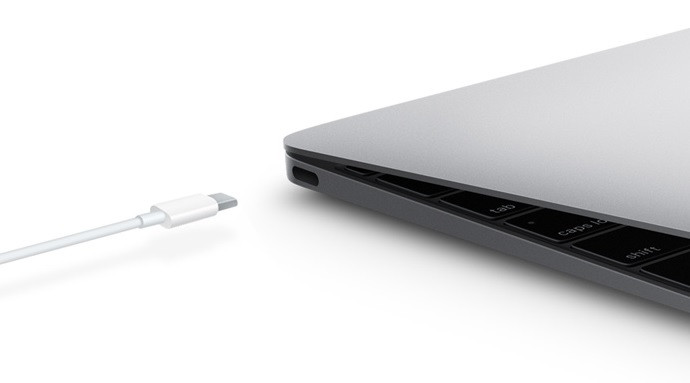What is USB-C? New universal port backed by Apple and Google

In the same week, both Apple and Google introduced the mainstream computer market to USB-C, the latest port which is claimed to be the only connection you will ever need.
No stronger way to emphasis this claim is how the new Apple MacBook has a single USB-C port as its only physical connection - it even doubles as the laptop's power port. Three days later, Google revealed the new Chromebook Pixel, which has two USB-C ports and two familiar USB 3.0 connections.
What is USB-C and what can it do?
USB-C is a small port which can accept (with adaptors) a wide variety of devices using various connections. This includes DisplayPort, HDMI, power, VGA and older versions of USB. All of these will require adaptors for now, but in the near future everything you currently connect to your laptop with a wire - including the power cable - will use a USB-C port.
But this isn't a case of Apple and Google producing a new port which doesn't communicate with products from other manufacturers - like Apple's Lightning and Intel's Thunderbolt connections. USB-C was developed by the USB Implementers Forum, which counts over 700 companies in its membership - including Apple, Dell, HP, Intel, Microsoft and Samsung - who all worked together to develop and certify the technology.

USB-C is small and reversible
Being not much larger than the micro-USB port on your Android smartphone, USB-C is perfect for the ultra-thin MacBook and other upcoming laptops - possibly tablets, too. And what's more, the port is reversible, so it doesn't matter which way up you attach cables to it. Just like the iPhone's Lightening port, as long as the cable is plugged in, it will work either way up.
USB 3.1
The new port uses USB 3.1 technology, which is theoretically twice as fast as USB 3.0 and fully compatible with the older standard. However, you will need a physical adaptor to connect a USB 3.0 (or 2.0) device to the new port. Using the 3.0 standard, USB-C can transfer data at up to 10Gbps, which is about the same as Thunderbolt.
Speaking of Thunderbolt, this is the technology superseded by USB-C, in the same way FireWire was replaced by Thunderbolt. An annoying side effect of technology advancing at breakneck speed, is that early adopters will need to buy a bag full of adapters to connect their current hardware to a shiny, new USB-C laptop, but give it a few years and the technology will be as commonplace as the regular USB 2.0 ports we're all familiar with.
Charging by USB
USB-C may even become more commonplace, thanks to it being powerful enough to replace a laptop's charging port. The new MacBook comes with a 29 Watt charger, which is much smaller and less powerful than the 85W power supply bundled with the 15in MacBook Pro, but it is claimed the new USB standard can theoretically support 100W, so less powerful chargers could well be a short-term problem.
A quiet game-changer
The short term problems of switching from one standard to another will be felt far and wide. Yes, you will need to purchase new adaptors, and yes, companies like Apple will be aggressive with their move to USB-C - and it is hard to see a more aggressive option than producing a laptop with just one post.
But like the switch from floppy disc to CD, to the removal of disc drives entirely, and the change for iPhone users from the 30-pin connector to Lightning, the pain won't last for long and the upsides make an uncomfortable couple of years worthwhile.
The good news is, because so many companies already back the new standard, accessories were primed and ready to go when Apple and Google announced their new laptops. Belkin has a range of low-priced Ethernet, DisplayPort, HDMI and micro-USB adaptors and cables starting at around £12 and available this summer.
© Copyright IBTimes 2025. All rights reserved.






















